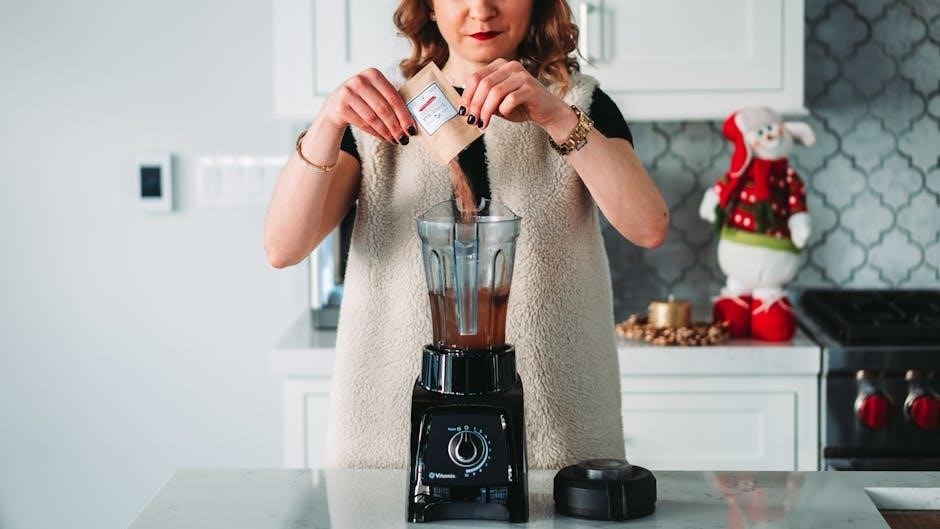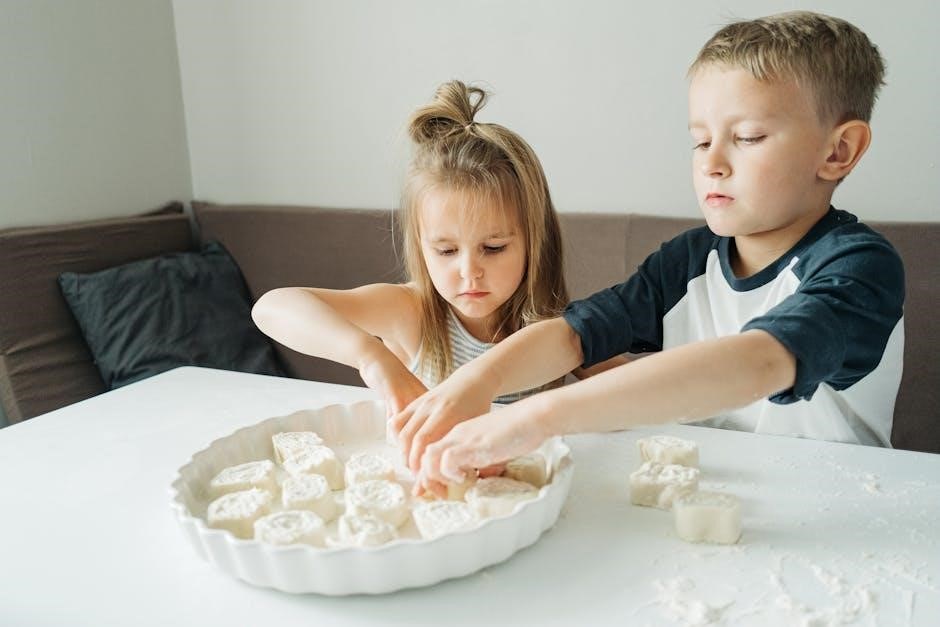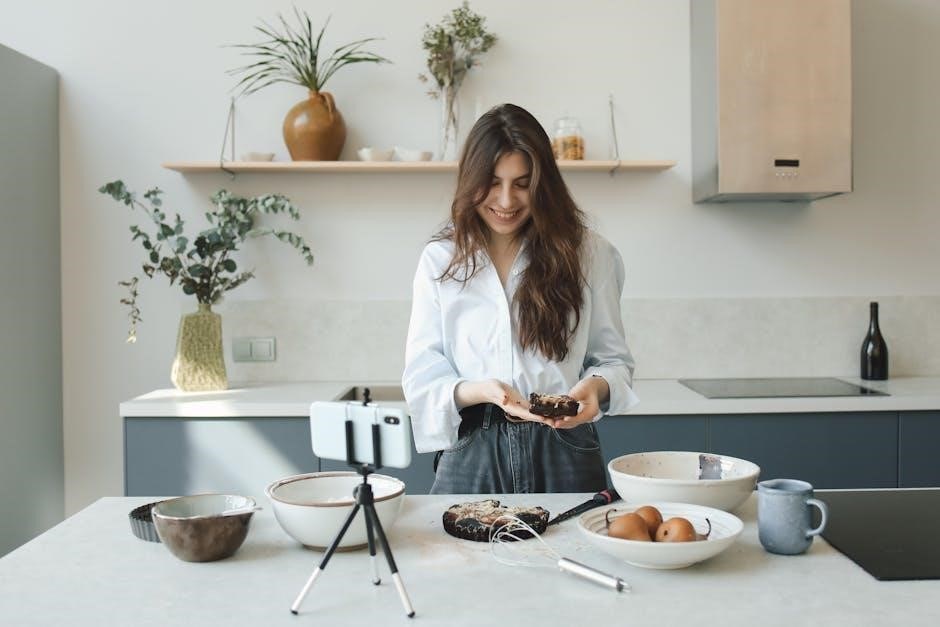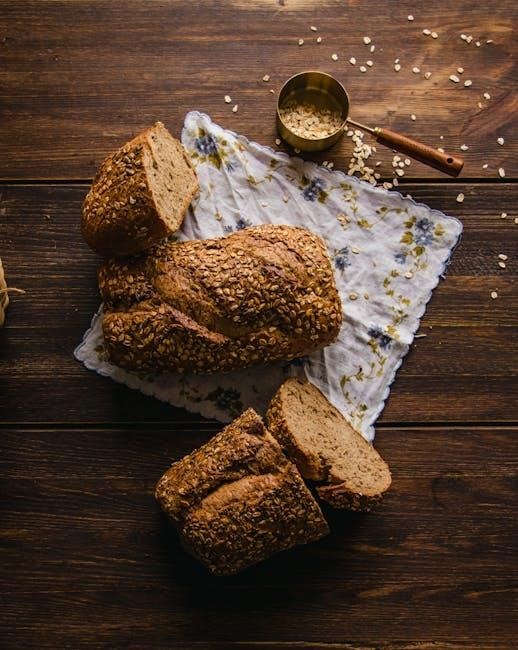premo sculpey baking instructions
Category : Instructions
Baking Premo Sculpey correctly is vital for durability. Preheat your oven to 275°F (135°C). Bake for 30 minutes per 1/4 inch of thickness. Thicker pieces benefit from initial 15-minute bakes, followed by shorter intervals. Always use an oven thermometer to ensure accurate temperature.
What is Premo Sculpey?
Premo Sculpey is a popular brand of polymer clay prized by artists and crafters for its unique qualities and versatility. It’s known for being soft enough to blend colors easily, yet firm enough to hold intricate details, making it ideal for a wide range of projects. This includes caning, mokume gane, and mica shift techniques, producing stunning visual effects in your creations.
The clay’s flexibility after baking contributes to the strength and durability of finished pieces, making it suitable for jewelry, home décor, scrapbook embellishments, and even functional items. Its ability to retain fine details also makes it a favorite for miniature sculpting and detailed embellishments.

Premo Sculpey conforms to ASTM D-4236 and EN 71 safety standards, ensuring that it is non-toxic and safe for use in your home. It comes in a wide array of colors that can be mixed to create custom hues, expanding the creative possibilities for artists. Unbaked clay can be stored and reused, preventing waste and maximizing its value.
Compared to other polymer clays, like Sculpey Ultralight, Premo Sculpey has a firmer consistency, making it better suited for advanced techniques and intricate designs. This makes it a favorite among experienced clay artists, while still being accessible to beginners.

Recommended Baking Temperature
Achieving the correct baking temperature is crucial for ensuring that Premo Sculpey cures properly, resulting in strong and durable finished pieces. The universally recommended baking temperature for Premo Sculpey is 275°F (135°C). It is imperative to preheat your oven before placing your clay creations inside. This ensures that the clay begins to cure evenly and consistently from the start.
Accuracy is key, so it’s highly recommended to use an oven thermometer to verify that your oven is maintaining the correct temperature. Many ovens can fluctuate, leading to under-baked or scorched clay. A standing oven thermometer placed directly next to the clay will provide the most accurate reading.
While some sources might suggest slight variations, sticking to 275°F (135°C) is generally the safest and most reliable approach. Deviating significantly from this temperature can compromise the integrity of the clay, leading to brittleness, cracking, or discoloration. Remember, proper curing is essential to prevent the plasticizers from leaching out over time, which can cause the clay to crumble.
Always prioritize temperature accuracy for optimal results. Using a lower temperature will result in underbaked clay, while a higher temperature can lead to burning and the release of unpleasant fumes.
Baking Time Based on Thickness

Determining the correct baking time for Premo Sculpey depends primarily on the thickness of your creation. As a general guideline, bake Premo Sculpey for 30 minutes for every 1/4 inch (6mm) of thickness. This ensures the clay is thoroughly cured throughout, resulting in a strong and durable finished product. For example, a piece that is 1/2 inch thick should be baked for 60 minutes.
It is always better to err on the side of baking slightly longer than necessary, especially for thicker pieces. Underbaking can lead to a weak and brittle final product. For larger or more complex pieces, consider breaking up the baking time into intervals. You can bake the piece for the initial recommended time, then allow it to cool completely before baking it for another 15-30 minutes.
This can help to prevent scorching and ensure even curing. Remember that these are guidelines. Always monitor your clay closely during baking and adjust the time as needed based on your oven and the specific project. If you are unsure, it is always best to test bake a small scrap piece of clay first to determine the optimal baking time for your oven.
Oven Type: Conventional vs. Toaster Oven
Both conventional ovens and toaster ovens can be used to bake Premo Sculpey, but each has its own advantages and considerations. Conventional ovens offer more consistent heat distribution, especially in larger models. This makes them ideal for baking larger or more complex Premo Sculpey projects that require even curing throughout. However, conventional ovens can take longer to preheat and may use more energy than toaster ovens.
Toaster ovens, on the other hand, are smaller and preheat more quickly. They are a good option for baking smaller Premo Sculpey creations or for crafters who want a more energy-efficient option. However, heat distribution can be less consistent in toaster ovens, leading to potential hot spots that can scorch the clay. It’s crucial to monitor the temperature closely and rotate the piece during baking to ensure even curing.
The choice between a conventional oven and a toaster oven depends on the size and complexity of your projects, as well as your personal preferences and resources. Regardless of the oven type, always use an oven thermometer to verify the temperature and prevent underbaking or scorching.
Toaster Oven Considerations
When using a toaster oven for baking Premo Sculpey, several factors require careful attention to achieve optimal results. Due to their smaller size, toaster ovens often exhibit uneven heat distribution. This can lead to some areas of the clay piece baking faster than others, potentially causing scorching or underbaking. To mitigate this, it is essential to use an oven thermometer to monitor the temperature accurately and rotate the Premo Sculpey item regularly during the baking process.
The proximity of the heating elements in toaster ovens also poses a risk of scorching, especially for taller pieces. Shielding the clay with aluminum foil can help deflect direct heat and prevent burning. Additionally, ensure adequate ventilation in the room while baking, as polymer clay can release fumes during the curing process.
Despite these challenges, toaster ovens offer a convenient and energy-efficient alternative to conventional ovens for smaller Premo Sculpey projects. By carefully monitoring temperature, providing shielding, and ensuring proper ventilation, you can achieve well-cured and beautiful results.
Preventing Scorching

Scorching is a common issue when baking Premo Sculpey, but it’s easily preventable with a few precautions. Accurate temperature control is paramount. Always use an oven thermometer to verify your oven’s temperature, as the dial may not be accurate. Premo Sculpey should be baked at 275°F (135°C); exceeding this can lead to burning.
Shielding your clay creations is another essential step. Tenting the piece with aluminum foil helps to deflect direct heat, preventing the surface from overheating. For larger or more intricate pieces, consider using a baking dish or covering the entire creation with foil, ensuring it doesn’t touch the clay directly.
Finally, monitor your baking time closely. Begin checking the piece a few minutes before the recommended baking time, and adjust as needed. If you notice any browning or burning, immediately reduce the oven temperature or remove the piece from the oven. With careful attention and these simple techniques, you can prevent scorching and achieve beautifully baked Premo Sculpey creations.
Ensuring Proper Curing
Proper curing is crucial for the strength and longevity of your Premo Sculpey creations. Undercured clay will be brittle and prone to breaking, while properly cured clay will be durable and flexible. The key to proper curing lies in maintaining the correct temperature and baking time. Premo Sculpey requires a baking temperature of 275°F (135°C) for 30 minutes per quarter inch of thickness.
Use an oven thermometer to ensure accurate temperature, as oven dials can be unreliable. Bake for the full recommended time, or even slightly longer for thicker pieces, to ensure the clay is thoroughly cured. A longer baking time won’t hurt Premo, but underbaking will compromise its strength.
Allow the clay to cool completely in the oven to prevent warping or cracking. Once cooled, test the flexibility of the clay. It should be firm but slightly flexible, not brittle or crumbly. A well-cured piece will withstand handling and use without breaking.
Post-Baking Handling
Once your Premo Sculpey creation has finished baking, proper handling is essential to maintain its integrity and appearance. Allow the piece to cool completely inside the oven before removing it. This gradual cooling process minimizes the risk of warping or cracking, especially in larger or more complex designs. Avoid placing the hot clay directly onto a cold surface, as the sudden temperature change can cause stress and potential damage.
After the piece is cool, handle it with care. While properly cured Premo Sculpey is durable, it’s still susceptible to scratches and damage from sharp objects or rough handling. If your piece requires sanding or finishing, do so gently using fine-grit sandpaper or polishing tools.
Store your finished Premo Sculpey creations in a cool, dry place away from direct sunlight. This will prevent discoloration or degradation of the clay over time. Avoid storing them in airtight containers, as this can trap moisture and lead to stickiness. With proper post-baking handling, your Premo Sculpey creations will remain beautiful and intact for years to come.
Troubleshooting: Underbaked Clay
Identifying underbaked Premo Sculpey is crucial for ensuring the longevity of your creations. An underbaked piece will often feel soft or flexible, even after cooling completely. It may also be prone to cracking or breaking easily under pressure. Additionally, the colors might appear dull or uneven, lacking the vibrancy of a properly cured piece.
If you suspect your Premo Sculpey is underbaked, don’t panic! The good news is that you can often re-bake it to achieve the desired hardness and durability. Simply place the piece back in the preheated oven at 275°F (135°C) and bake for an additional 15-30 minutes. Be sure to monitor it closely to prevent scorching, especially if the piece is thin or delicate.
After the re-baking process, allow the piece to cool completely before handling it. If it still feels soft, repeat the baking process until it reaches the desired firmness. Remember, patience is key when working with polymer clay, and proper baking is essential for creating lasting, beautiful pieces.
